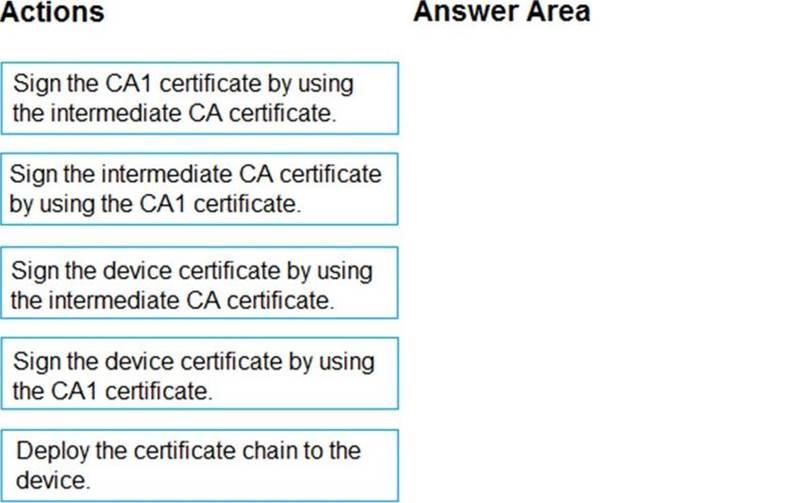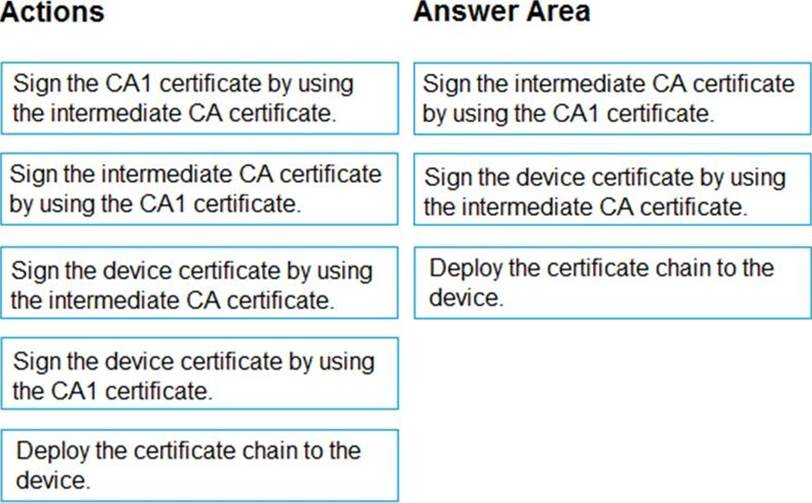- All Exams Instant Download
You have an Azure IoT hub named Hub1 and a root certification authority (CA) named CA1. Hub1 is configured to use X.509 certificate device authentication
DRAG DROP
You have an Azure IoT hub named Hub1 and a root certification authority (CA) named CA1. Hub1 is configured to use X.509 certificate device authentication.
You and a custom manufacturing partner complete a proof of possession flow.
You plan to deploy IoT devices manufactured by the custom manufacturing partner. Each device will have a certificate generated by an intermediate C
A . The devices will authenticate by using device certificates signed by the partner.
You need to ensure that the custom devices can connect successfully to Hub1.
Which three actions should you perform in sequence? To answer, move the appropriate actions from the list of actions to the answer area and arrange them in the correct order.

Answer: 
Explanation:
Graphical user interface, text, application, chat or text message
Description automatically generated
Box 1: Sign the intermediate CA certificate by using the CA1 certificate.
X.509 certificates are typically arranged in a certificate chain of trust in which each certificate in the chain is signed by the private key of the next higher certificate, and so on, terminating in a self-signed root certificate. This arrangement establishes a delegated chain of trust from the root certificate generated by a trusted root certificate authority (CA) down through each intermediate CA to the end-entity "leaf" certificate installed on a device.
Box 2: Sign the device certificate by using the intermediate CA
An intermediate certificate is an X.509 certificate, which has been signed by the root certificate (or by another intermediate certificate with the root certificate in its chain). The last intermediate certificate in a chain is used to sign the leaf certificate. An intermediate certificate can also be referred to as an intermediate CA certificate.
Box 3: Deploy the certificate chain to the device.
The leaf certificate, or end-entity certificate, identifies the certificate holder. It has the root certificate in its certificate chain as well as zero or more intermediate certificates. The leaf certificate is not used to sign any other certificates. It uniquely identifies the device to the provisioning service and is sometimes referred to as the device certificate. During authentication, the device uses the private key associated with this certificate to respond to a proof of possession challenge from the service.
Latest AZ-220 Dumps Valid Version with 88 Q&As
Latest And Valid Q&A | Instant Download | Once Fail, Full Refund
Subscribe
Login
0 Comments
Inline Feedbacks
View all comments

